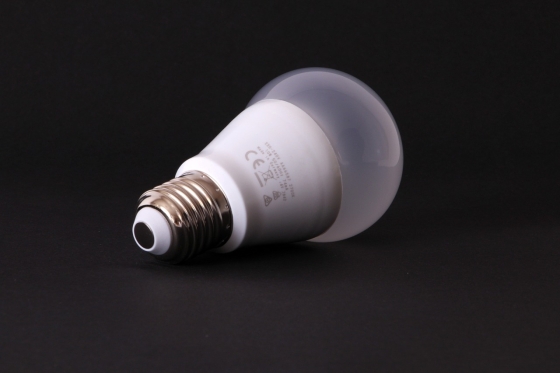The Future of Smart Bulbs
It is already possible to buy bulbs which can be controlled through your smartphone – with a simple tap to change colour, dim, turn on/off, play music and so much more. With this technology seemingly here to stay, what will the next step be?

It is already possible to buy bulbs which can be controlled through your smartphone – with a simple tap to change colour, dim, turn on/off, play music and so much more. With this technology seemingly here to stay, what will the next step be? Will more homes adopt them? Will cities utilise them? Could the humble light bulb be changed forever? New technology is revolutionising the lightbulb market so let’s take a look at where it may go next…
Li-Fi
This is arguably the most exciting breakthrough in the lighting industry and will make smart bulbs integral to your home network with your internet connection beamed through them. Li-Fi technology was first demonstrated in 2011 by a team of researchers from Edinburgh University but since then it has been developing rapidly. Current Wi-Fi works with invisible radio waves but as this is crowded, an alternative was needed. Li-Fi (which could be 100 times faster) utilises the visible light spectrum to send information. Last year an Estonian start-up demonstrated the technology using an LED bulb, internet connection and photo detector, and managed to transmit data at a speed of one gigabyte per second.
Li-Fi technology could have limitless applications and may easily replace the current internet networks in homes, offices and public spaces. Because Li-Fi works with the visible light spectrum, it would not only be the internet source it would be the light source too. Using visible spectrum as opposed to radio waves means it won’t interfere with airplanes or hospital equipment. Already this technology is being implemented around the world with Dubai recently announcing plans to introduce Li-Fi technology to its street lighting. The first phase will be rolled out later this year.
Security
Lightbulbs with security features have already arrived with programmable cycles that make it appear as if you are home when away on holiday. The next level of security features to be added to lightbulbs are far more advanced. Cameras in lightbulbs already exist but this technology is not well adopted yet. In the next few years expect more of these types of bulbs to be developed.
Cyber Security
One of the biggest weaknesses of current smart lightbulb technology is the security features with a lack of encryption making them vulnerable to hackers. This is one fear that is slowly being solved - new laboratories have been set up to look into the security of the connected home and their initial findings appear promising. Using encryption can make this technology far more secure, which is a necessity when they look set to become such a large part of our daily lives.
